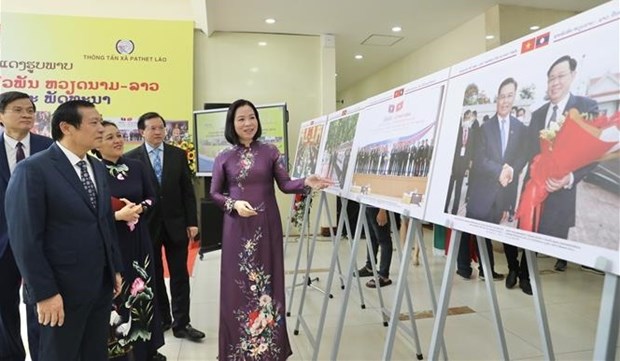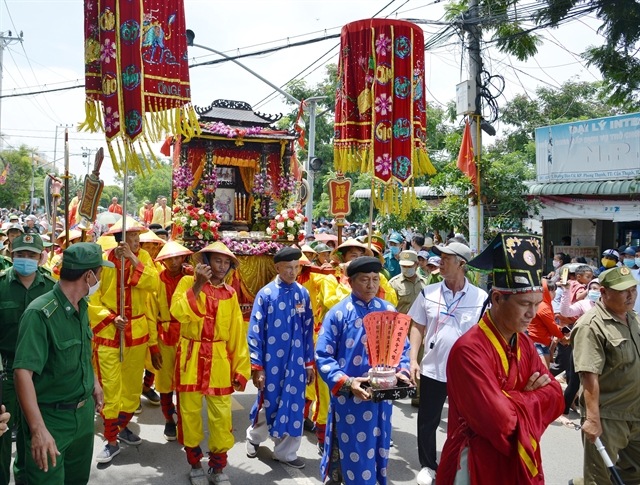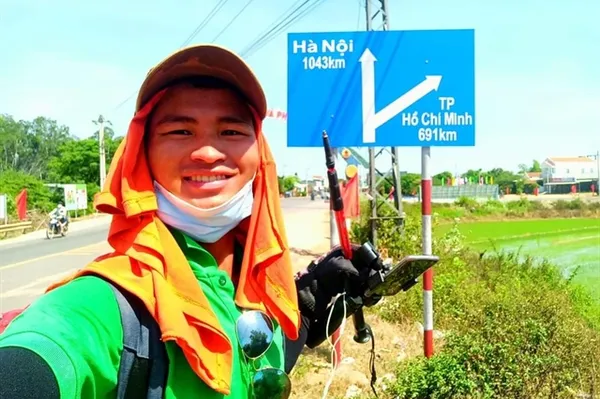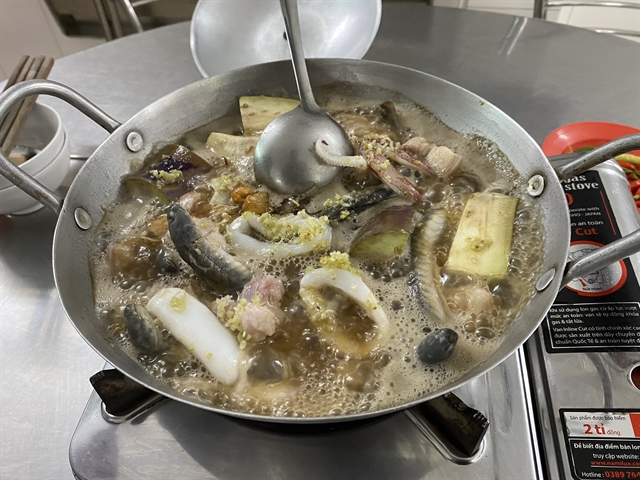
Lê Hương
The four-day national holiday between September 1 and 4 witnessed a bustling travelling atmosphere throughout the country, which was a sign of a full recovery of the tourism sector in the country.
According to the Việt Nam National Administration of Tourism (VNAT), some three million people hit the road over the holiday while the average room capacity reached 60-65 per cent, the highest since the pandemic broke out.
“Most of the provinces/localities have basically reached the same number of guests compared to that of the same period in past years, and some localities saw a three to four times increase in guest numbers,” admitted Nguyễn Trùng Khánh, General Director of the VNAT.
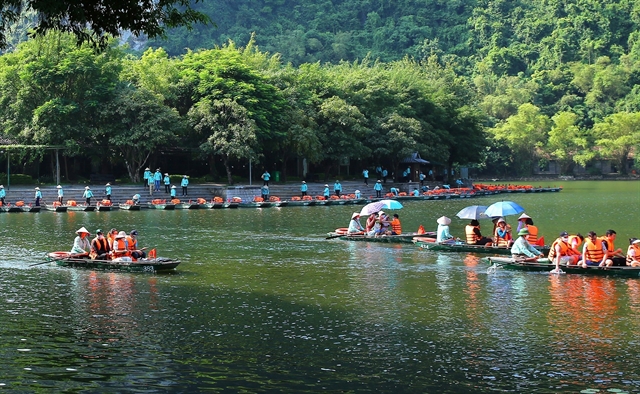 |
| People visit Tràng An Tourism Site in Nình Bình Province. — VNA/VNS Photo Đức Phương |
Tourism experts analysed that the national holiday was near the start of the academic year, so people tended to choose close destinations and travel in groups of family members or friends.
Southern people preferred destinations such as Vũng Tàu, Phan Thiết (Bình Thuận), Đà Lạt (Lâm Đồng), Phú Quốc, Nha Trang and Đà Nẵng, while northern people like Ninh Bình, Pù Luông (Thanh Hóa), Sa Pa (Lào Cai), Mù Cang Chải, Tú Lệ (Yên Bái) and Hà Giang.
Vũ Thế Bình, chairman of the Việt Nam Tourism Association, noted that most localities hosted various festivals and art events to celebrate Independence Day, which added more reasons for visitors to come, such as a national motorbike race in Cần Thơ, an exhibition of orchids also in Cần Thơ and a hot air balloon festival in Thanh Hóa.
HCM City drew tourists with the “Welcome to HCM City” programme, which helped gather 920,000 visitors to the city, 130,000 of whom stayed overnight.
Đặng Hương Giang, Director of Hà Nội Tourism Department, said the city received over 422,000 visitors, with total income from tourism of VNĐ1.3 trillion (US$55.5 million).
Director of Ninh Bình Tourism Department Bùi Văn Mạnh said the province hosted over 151,000 visitors in four days, an 83 per cent increase from the same period in 2019. Among them, 8,600 were foreign visitors and over 142,000 were Vietnamese.
Mạnh noted that, in general, tourism enterprises strictly followed the regulations of the tourism industry. The room capacity in the whole province was 75-85 per cent, among the highest in the country.
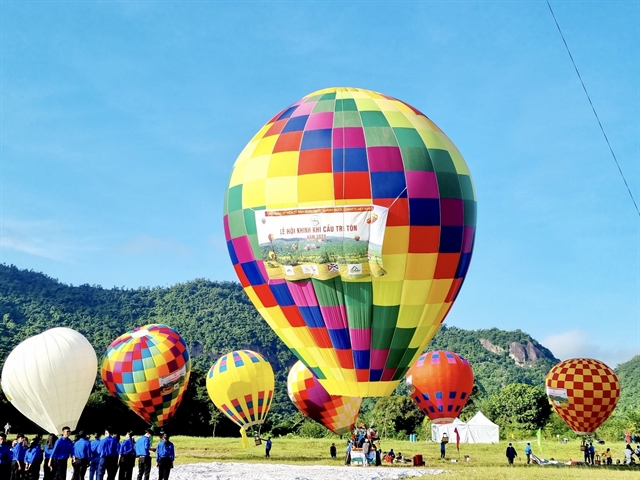 |
| A hot air balloon festival in the southern province of An Giang during the national holiday. — VNA/VNS Photo Thanh Sang |
Vũ Huy Thưởng, Deputy Director of Hải Phòng Tourism Department, said tourists flocked mostly to Đồ Sơn and Cát Bà tourism sites with 74,500 visitors, most of whom were Vietnamese people.
In addition, visitors joined food tours, city tours and relic sites in Hải Phòng such as Trạng Trình Nguyễn Bỉnh Khiêm Relic Site (in Vĩnh Bảo District); Mạc Dynasty Commemoration Site (Kiến Thụy); Bạch Đằng River Relic and Landscape Site (Thủy Nguyên); Hòn Dấu Resort, Dấu Islet, Tường Long Tower (Đồ Sơn), and especially the buffalo festival in Đồ Sơn.
Thưởng said local hotel and restaurants in Cát Bà and Đồ Sơn offered good services without increases in prices.
“The security in the sites, bus station, railway station, and ship docks has been enhanced throughout the holiday,” Thưởng said.
In Đà Nẵng, the tourism hub of the central region, the total number of guests reached over 219,000 people in four days, a 38.1 per cent against the same occasion in 2019. Some sites seeing the most tourists included Sun World Bà Nà Hills (50,000 people), and Asian Park (37,000 people).
Tây Nguyên and Gia Lai saw a sudden increase of guests of over 27,700 people, four times more than the same time in 2019.
Positive sign for inbound market
According to Khánh, the increased number of inbound guests is a positive sign for peak inbound season in October.
During the four-day holiday, Hà Nội received 22,700 foreigners; HCM City, 32,484; Đà Nẵng, 16,800. Most of the foreigners were from Europe, the US and Australia, who stayed some five nights. Their favourite products included river cruises, bay cruises and sea entertainment services.
Yet Trần Văn Khoa, who owns Jack Trần Tours offering tours to rural areas in Hội An, in the central province of Quảng Nam, said he has received only a few foreigners recently.
“We guess by the end of the year, when the economics recovers from the pandemic effects, more foreigners will visit Việt Nam,” he told Việt Nam News.
Bình said outbound tours have been sold more after the pandemic.
“Popular choices are Singapore, Malaysia, Indonesia, Laos and Thailand, with reasonable prices and easy visa policy,” he said.
According to the Statistics General Department, 486,400 foreigners came to Việt Nam in August, a 38 per cent increase against that of the previous month.
In the past eight months, 1.44 million foreigners came to Việt Nam, a 97.3 per cent decrease against the same period in 2019.
In the past eight months, South Korean were the most frequent visitors to Việt Nam with 369,800 people, then came the US with 139,400 people.
The total income from tourism in the first eight months of 2022 is estimated to reach some VNĐ356.6 trillion, most of which was from domestic travelers. VNS


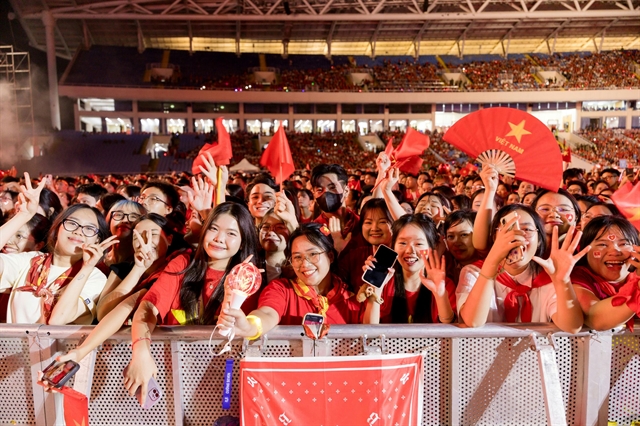
.jpg)

.jpg)

